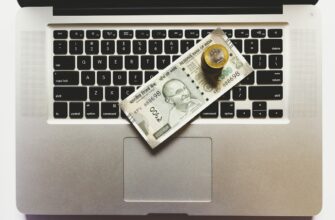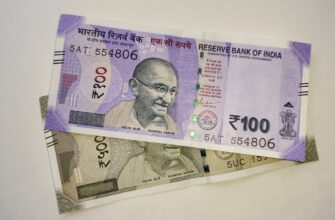“title”: “How to Secure Your Blockchain Ledger from Hackers: A Comprehensive Tutorial”,
“content”: “Blockchain technology has revolutionized industries by offering a decentralized, tamper-resistant ledger system. However, the security of a blockchain ledger is only as strong as its weakest link. Hackers constantly seek vulnerabilities in blockchain networks, making it critical to implement robust security measures. This tutorial provides a step-by-step guide to protecting your blockchain ledger from hackers, including best practices, common threats, and actionable solutions.nn## Understanding the Threats to Blockchain LedgersnBlockchain ledgers are vulnerable to several types of attacks, including 51% attacks, private key theft, and smart contract vulnerabilities. Hackers may exploit weaknesses in consensus mechanisms, cryptographic algorithms, or user behavior to compromise the integrity of the ledger. For example, a 51% attack occurs when a single entity controls more than half of the network’s mining power, allowing them to manipulate transactions. Similarly, private key theft can occur through phishing, malware, or insecure storage methods.nn## Steps to Secure Your Blockchain Ledger from HackersnTo protect your blockchain ledger, follow these key steps:nn1. **Use Strong Encryption and Authentication**
Ensure all data stored on the ledger is encrypted using robust algorithms like $$AES-256$$ or $$SHA-256$$. Implement multi-factor authentication (MFA) for access to private keys and nodes to prevent unauthorized entry.nn2. **Regularly Audit and Update Systems**
Conduct periodic security audits to identify vulnerabilities in your blockchain infrastructure. Update consensus mechanisms, cryptographic libraries, and software to patch known exploits. For example, outdated versions of $$ECDSA$$ (Elliptic Curve Digital Signature Algorithm) may be susceptible to key recovery attacks.nn3. **Secure Node Infrastructure**
Protect network nodes from DDoS (Distributed Denial-of-Service) attacks by using firewalls and rate-limiting. Ensure nodes are physically and digitally secured, with firewalls configured to block unauthorized access to critical ports like $$TCP/443$$ (HTTPS) or $$UDP/512$$ (RPC).nn4. **Implement Cold Storage for Private Keys**
Store private keys in offline wallets (cold storage) to prevent theft. Use hardware wallets like $$Ledger Nano$$ or $$Trezor$$, which are resistant to malware and physical breaches.nn5. **Monitor for Anomalies**
Deploy real-time monitoring tools to detect unusual activity, such as sudden spikes in transaction volume or unauthorized node connections. Tools like $$Chainalysis$$ or $$Blockchair$$ can help track suspicious patterns.nn## Common Vulnerabilities in Blockchain LedgersnHackers often target the following weaknesses:nn- **Weak Consensus Mechanisms**: Proof-of-Work (PoW) networks are vulnerable to 51% attacks if the network is not properly secured. Transitioning to Proof-of-Stake (PoS) can reduce this risk.n- **Unsecured Smart Contracts**: Bugs in smart contracts can be exploited via reentrancy attacks or overflow vulnerabilities. Use tools like $$Slither$$ or $$MythX$$ to audit contracts before deployment.n- **Insecure API Endpoints**: Expose APIs to unauthenticated users, and ensure they are rate-limited and encrypted with $$TLS 1.3$$.n- **Phishing and Social Engineering**: Users may lose private keys through phishing scams. Educate users on recognizing suspicious links or emails.nn## FAQ: Frequently Asked Questions About Blockchain Securitynn**Q: How can I detect a blockchain ledger breach?**
A: Monitor for unusual transaction patterns, such as a sudden increase in transaction volume or unauthorized node activity. Use blockchain analytics tools like $$Elliptic$$ or $$Koinly$$ to trace suspicious transactions.nn**Q: What are the legal implications of a blockchain ledger hack?**
A: In many jurisdictions, blockchain hacks may violate data protection laws like GDPR if user data is compromised. Consult legal experts to understand your liability and compliance requirements.nn**Q: Can a blockchain ledger be completely secure?**
A: No system is 100% secure, but a well-protected ledger can be highly resilient. Regular updates, strong encryption, and multi-layered security measures significantly reduce the risk of breaches.nn**Q: How do I protect my personal blockchain wallet?**
A: Use a hardware wallet, enable MFA, and store private keys offline. Avoid sharing wallet addresses publicly and use a password manager to secure recovery phrases.nn**Q: What is the best way to secure a decentralized ledger?**
A: Combine technical safeguards (encryption, audits) with organizational policies (user training, access controls). Regularly update software and collaborate with security experts to stay ahead of emerging threats.nnBy following these steps and staying vigilant, you can significantly reduce the risk of your blockchain ledger being compromised. Remember, security is an ongoing process that requires continuous monitoring and adaptation to new threats.”
}








